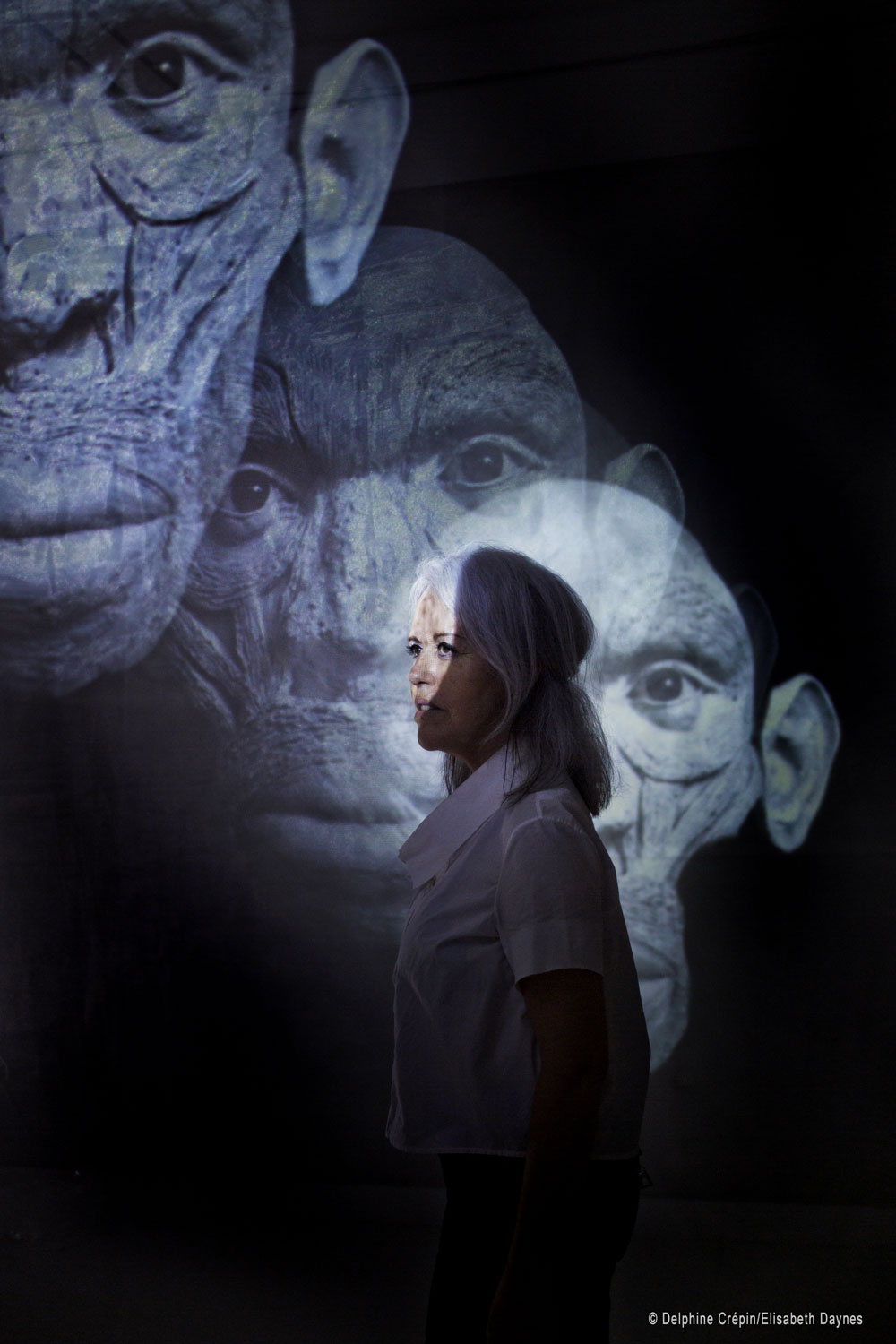Elisabeth Daynes’ original work is a reflection on the challenges of the human figure and the body in our contemporary era.
Captivated by the work of hyperrealist artists such as John de Andrea, Elisabeth’s work seeks to represent individuals and their bodies, some lost in the depths of time, others adrift in the future. We are suddenly aware that tomorrow’s fashion may include blister-pack lips-to-order and living skin masks that one can take off and regenerate. Moving past today’s narcissism where the boundaries between the real and the virtual are increasingly permeable, Elisabeth breaks into the waiting-room of the future. This is a ready-to-wear offered to the next generations of the evolution hackers that we are. Virtual identities are there for the taking; avatars make it possible to transcend our human condition.
Time is a sort of raw material waiting to be shaped. Elisabeth’s post-humans are still human beings with blood circulating in their veins; but they are evolving, floating in time, blossoming, reimagining themselves. As they search for their identity, they break down the here-and- now and redesign it at will. From diversity we came and to diversity we shall return.
We are transported to another era; where some of us seeking eternal youth “shop” for new facial features while others loose themselves in what they could be or become. All share the conscious or sub-conscious obsessional quest for physical perfection and eternal youth with the realization that Time is their enemy and the Future harbors their ultimate destruction.
Elisabeth Daynes uses various formats, materials, and technologies to model, shape, and transform the structure of the skull itself, reclaiming the extraordinary time before flesh covers the bones to magnify the muscles of the face and expression.
Elisabeth Daynes is a renowned paleo artist whose sculptures are exhibited in the most prestigious museums over the world: Field museum, Chicago; Perot Museum, Dallas; Gyeonggi-do Jeong Museum, Seoul; CosmoCaixa Science Museum, Barcelona; INAH, Mexico, Narodni Museum, Prague; Musée de l’Homme, Paris; … For the past decade, she has been adding to her scientific reconstructions an original work crossed by a reflection on the challenges of the human figure and the body in our contemporary era.
From the early stages of her career as a plastic artist in theatre, she has been fascinated by the question of physical metamorphosis and the play with appearances. With a first exhibition dedicated to The Truth of Faces, she began a meditation on identity and incarnation that she will pursue in many other exhibitions such as Humans, Curieux face-à-face, Bouche B. Her highly praised Find Yourself display presented at Art up Lille in 2019 set off several other exhibitions at the Gallery du jour agnès b. in Paris, 836M Gallery in San Francisco and Loo & Lou gallery in Paris.
For Elisabeth Daynes, the face is a mysterious place, the opposite of a simple surface that could be treated as an ephemeral mask. Trash compiles discarded faces in a multicolored mound sprinkled with red mouths like flower petals that a distracted hand would have scattered… So many fleeting masks discarded by their owners already caught in other dreams of faces… Elisabeth questions us: Is the lifetime of a face now that of a flower?
Visages or Mirages? Versatile and volatile, these discarded masks attest for the extent of disturbing thirst for metamorphosis in our societies. While science is an invitation to always more promises, while rewriting oneself has become a planetary practice, Elisabeth Daynès warns on the limits and risks of this face fair. This would result in a ready-to-wear appearance where a face could be acquired like any other object, and then follow the fate of any object: be thrown away. However, asserts Elisabeth Daynes, the face is the opposite, it is the very place where emotions express themselves, where thoughts emerge, where the being is revealed. She expresses it with her so true, so vertiginously true, hyper realistic sculptures. She expresses it with The Curious absorbed in an intense face-to-face with a lost identity. She expresses it with this woman riveted to her mirror in search of her truth. She expresses it with this sculpture whose eyes are closed, the very figure of appeasement.
This poetics of the face is what is at stake in the artist’s work: celebration of the metaphysical power of a face in Identity, ode to the plant in a mesmerizing procession of Las Meninas, plaster series where the singularity of beings triumphs, effervescent bouquets of blooming mouths.
By focusing on a particular part of the body or of the face, by isolating and transfiguring it, Elisabeth Daynes creates surrealist fields where red lips bloom like puppies and tender pink breasts are transformed into unusual nurseries. Elisabeth Daynès sublimates the anatomical detail and poetically empowers it. This is the art of the detail, where the detail becomes the whole. The face can thus become a landscape for those who know how to look at it…
Anne de Marnhac

